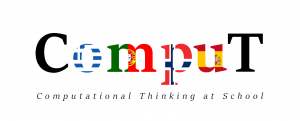Αρχική » Άρθρα με ετικέτα 'creative / systemic thinking'
Αρχείο ετικέτας creative / systemic thinking
Concepts and Practices of Computational Thinking by HELLO RUBY
Source HelloRuby
BBC Computational thinking in practice
A complex problem is one that, at first glance, we don’t know how to solve easily. Computational thinking involves taking that complex problem and breaking it down into a series of small, more manageable problems (decomposition). Each of these smaller problems can then be looked at individually, considering how similar problems have been solved previously […]
Dimensions of Computational Thinking in COMPUT project
When we started working on the project Computational Thinking at School, our plan was to study the following dimensions of Computational Thinking creative problem solving algorithmic approach to problem-solving problem solution transfer logical reasoning abstraction generalization representation and organization of data systemic thinking evaluation social impact of computation While working on the dimensions, it proved […]
BBC Examples of creative problem solving
Thinking computationally Thinking computationally is not programming. It is not even thinking like a computer, as computers do not, and cannot, think.Simply put, programming tells a computer what to do and how to do it. Computational thinking enables you to work out exactly what to tell the computer to do.For example, if you agree to meet your […]




